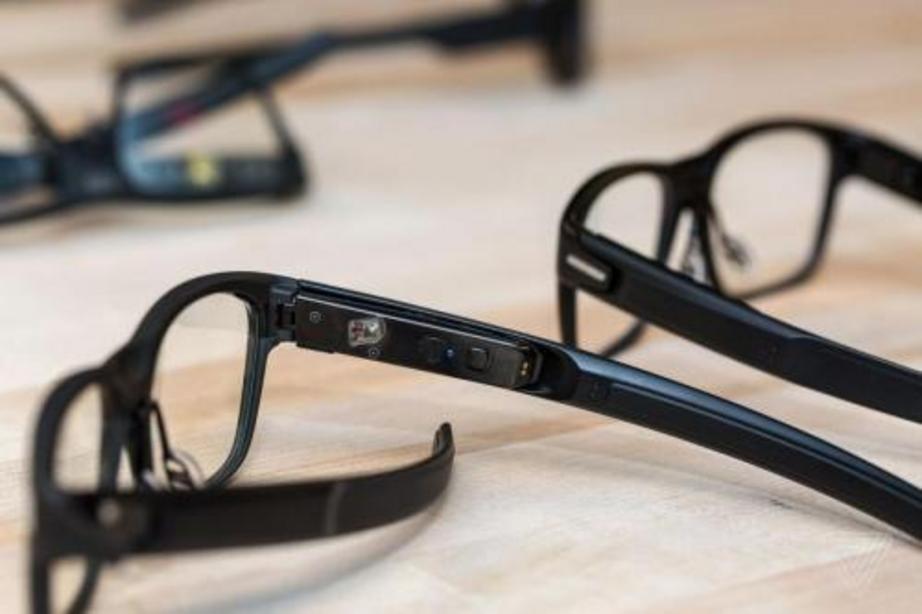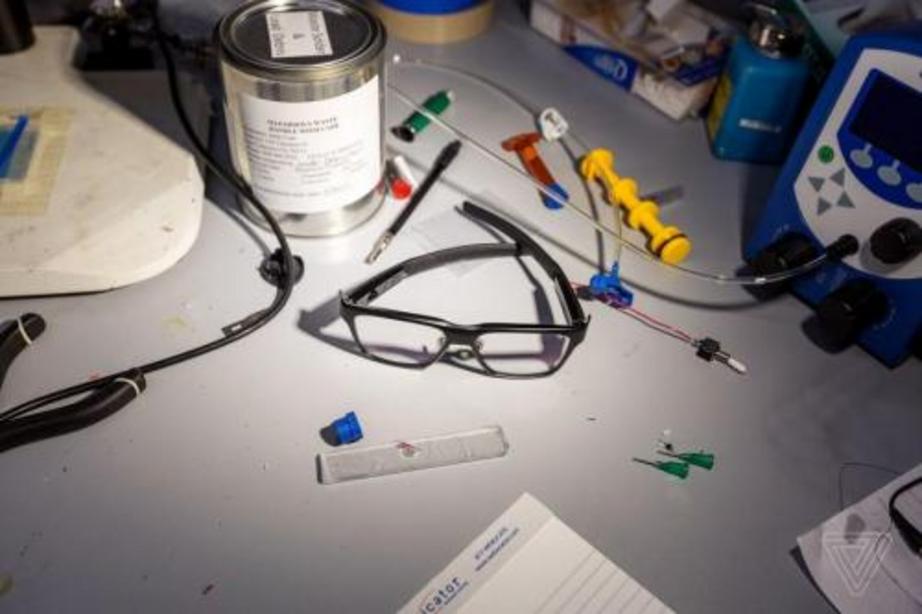Intel's new "smart glasses"
... shoot laser beam directly into your retina
For anyone who wanted a pair of Google glasses but didn't want to look like a lazy Borg cosplay, Intel may have just what you need. Just one catch; you have to be OK with a laser firing photons directly into your retina.
Consummate techie and Executive Editor at The Verge, Deiter Bohn, took Intel's Vaunt smart glasses for a test drive - which he says are "virtually indistinguishable from regular glasses," and are the "first pair of smart eyeglasses I've tried that doesn't look ridiculous."
The smart glasses - which weigh less than 50 grams - work by projecting a very low-powered laser (a VCSEL), which shines a "red, monochrome image somewhere in the neighborhood of 400 x 150 pixels" on to a holographic reflector on the right lens of the glasses - which is then reflected directly into your eyeball and onto your retina.
Intel swears it's safe.
“It is a class one laser. It’s such low power that we don’t [need it certified],” he says, “and in the case of [Vaunt], it is so low-power that it’s at the very bottom end of a class one laser.” -Mark Eastwood, Director of Industrial Design, Intel NDG group
“We use a holographic grading embedded into the lens to reflect the correct wavelengths back to your eye. The image is called retinal projection, so the image is actually ‘painted’ into the back of your retina,” says Jerry Bautista, the team lead for wearable devices at Intel's NDG. Due to the fact that the glasses project images directly onto the retina, the projected image is in focus on both prescription and non-prescription lenses.

In addition to the micro-electro-mechanical (MEMS, or "Pico") projector, the glasses also pack hardware and software for Bluetooth communication with your phone, as well as an accelerometer and a compass. Future models may even include a microphone for use with virtual assistants such as Alexa and Siri.
And of this, along with batteries, are contained within a remarkably compact chassis.
Requiring a custom fitting to each user, the glasses project a stream of information on what Bohn says looks like a screen, delivering a wide variety of information:
At its core, Vaunt is simply a system for displaying a small heads-up style display in your peripheral vision. It can show you simple messages like directions or notifications. It works over Bluetooth with either an Android phone or an iPhone much in the same way your smartwatch does, taking commands from an app that runs in the background to control it.
When looking down, the Vaunt glasses project a "rectangle of red text and icons down in the lower right of your visual field," however, when the wearer is not glancing down in that direction, the display shuts off - as it was designed to be "nonintrusive," according to Bohn.
”We didn’t want the notification to appear directly in your line of sight,” says Eastwood. “We have it about 15 degrees below your relaxed line of sight. … An LED display that’s always in your peripheral vision is too invasive. … this little flickering light. The beauty of this system is that if you choose not to look at it, it disappears. It is truly gone.” -The Verge
Bohn says he adapted to the glasses very quickly - writing that it became "natural within less than an hour to glance over at it to make it appear, or ignore it and focus on the person I was speaking with."
Or, as it turns out, not focus on the person you're speaking with:
”So I’m talking to you right now and you feel like you mean so much,” says Ronen Soffer, general manager for software products at NDG, “but I’m actually playing a trivia game right now.” (He wasn’t actually doing that, to be clear.) But after a day of playing around with the Vaunt prototypes, I completely believe that sort of thing is not just possible soon, but probably inevitable. Intel is thinking about those implications, too. Soffer wryly jokes: “You can ignore people more efficiently that way.”
While it was unclear how users might interact with the Vaunt glasses, some have suggested that voice recognition, head gestures or both could activate it - or one could "trust the AI to show you what you need to know in the moment," perhaps things such as nearby gas stations if you've failed to notice that your fuel light has been on for the last 12 miles.
Imagine walking down the street, looking at a shop or a restaurant, and instantly checking out Yelp reviews. Or perhaps the system could be used to project player stats in real time while at a sporting event. Whatever the case, Intel's Brian Soffer says the company's AI might just know exactly what you need to see.
“Listen, sometimes a better way to succeed is to make the problem smaller,” says Soffer. Intel’s AI for figuring out what to show you is “focused on certain types of moments, and we’ve been developing this technology for five or six years now to focus on those wearable, out-and-about moments.”

Developing the platform
Intel will be launching an "early access program" later this year so that developers can begin to tinker with the Vaunt system - developing apps for both phones and the glasses themselves.
The Verge's Bohn speculates that apps may directly stream content to the Vaunt glasses from the cloud, presumably to minimize on-board processing requirements - similar to how a Google Cast-enabled TV works as an endpoint for streaming video. When asked if this was the plan, Intel said "we'll talk about that at a later date," adding that "it really is built as an open platform ... built from the ground up to be a mobile platform that accesses the internet. And a wearable device gets really powerful when it changes the way you access the internet."
While it's unclear if Intel will bring the Vaunt glasses to market or find a partner to bring them to retail, The Verge notes that Intel is reportedly looking to sell a majority stake in its augmented reality business, according to Bloomberg.
Intel has a reputation for showing off ideas that never turn into real products. It comes up with a cool concept, proves out the technology, then hopes to convince others to take that idea and turn it into a real product. CEO Brian Krzanich comes on a CES stage, talks about a charging bowl (or hey, smart eyeglasses!), and then we wait to see if they’ll come to market. Often (maybe even usually), they don’t.
I think the intention with Vaunt is a little different from Intel’s usual playbook. For one thing, Bloomberg’s report confirms that Intel is looking for partners with “strong sales channels … rather than financial backers.” For another, Bautista and I spoke a bit about how the sales channels for eyeglasses work now back in December.
”There’s something on the order of 2.5 billion people that require corrective lenses,” he says. “They get their glasses from somewhere. Sixty percent of them come from eye care providers. … We would say these glasses belong in those kinds of channels. People are going to buy them like they buy their glasses today.” -The Verge
While the Vaunt glasses are lighter, better looking, and possibly have a longer battery life than other smart glasses such as Magic Leap or HoloLens, they also project less information to the user. That said, as Bohn notes, the Vaunt is the "first pair of smart eyeglasses I've tried that doesn't look ridiculous."
Now let's see what developers can do to make them rock and roll. Someday we'll be telling our grandchildren about the days before laser beams were projected into our retinas. Hopefully we won't be blind in one eye.

